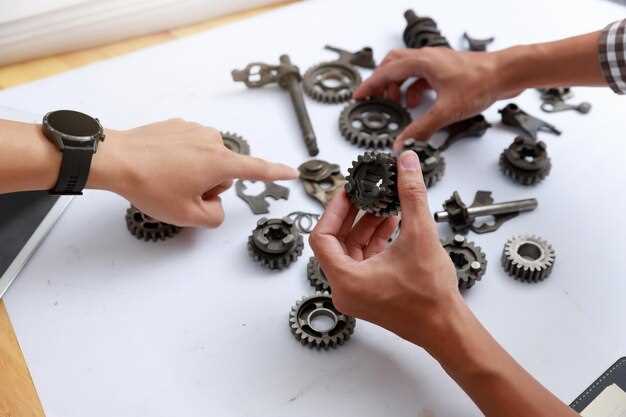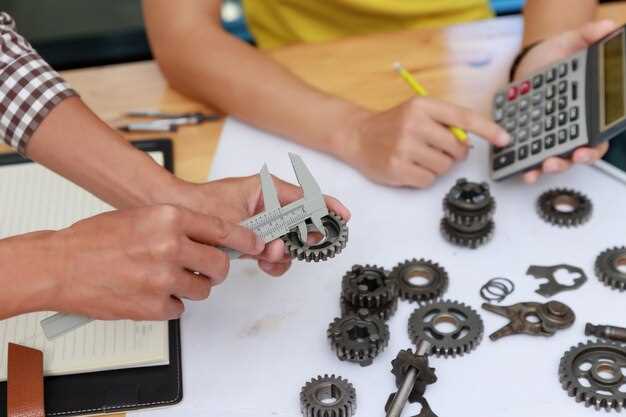
In the world of rebuild projects, understanding the nuances of parts compatibility is essential for achieving successful outcomes. Compatibility refers to the ability of different components to work together seamlessly, ensuring that the rebuilt system functions as intended. Whether you are restoring a classic car, renovating machinery, or overhauling electronic devices, recognizing which parts can be substituted or must be retained is a critical factor that determines the longevity and performance of the project.
The significance of parts compatibility cannot be understated. Incompatible components can lead to a plethora of issues, ranging from diminished performance to catastrophic failures. As such, a thorough analysis of compatibility not only simplifies the selection process but also enhances the overall reliability of the assembly. It fosters a more efficient workflow, minimizing the risk of costly delays and rework, while also ensuring optimal functionality of the rebuilt project.
Moreover, the evolving landscape of manufacturing means that original parts may sometimes be obsolete or unavailable. This reality brings the importance of understanding and assessing compatibility to the forefront. By leveraging insights into parts compatibility, rebuilders can identify alternative components that meet the necessary specifications, thereby expanding their options while still achieving the desired performance metrics. Ultimately, a meticulous approach to parts compatibility is the cornerstone of any successful rebuild endeavor.
Evaluating Component Specifications for Optimal Fit

When embarking on a rebuild project, the compatibility of parts is crucial for ensuring the longevity and performance of the final product. Evaluating component specifications is an essential step to achieve an optimal fit, minimizing the risk of failure and increasing reliability.
First, understanding the dimensions of each component is fundamental. Precise measurements, including length, width, height, and diameter, must align with the original specifications to ensure proper installation. Discrepancies can lead to misalignment, which may affect the overall operation.
Another critical factor is the material composition of the parts. Different materials possess varying degrees of strength, flexibility, and resistance to environmental factors. Choosing components made from compatible materials can significantly impact the durability and effectiveness of the rebuild.
The tolerance levels of each component also play a pivotal role in compatibility. Tolerances indicate how much variation is acceptable in the dimensions of parts. Ensuring that parts meet or exceed tolerance specifications will prevent issues during assembly and operation, leading to a more seamless fit.
Furthermore, the engineering standards that govern the components should be reviewed. Parts manufactured according to specific industry standards are more likely to fit appropriately and function correctly. This adherence to standards reduces the risk of incompatibility and enhances overall project success.
Lastly, considering the performance ratings of parts can aid in making informed decisions. Specifications surrounding load capacity, heat resistance, and lifecycle expectancy should align with the intended use of the rebuilt assembly. Evaluating these factors ensures that the selected components can handle the intended operational stresses effectively.
By meticulously evaluating these component specifications, rebuild projects can achieve optimal fit and performance, resulting in successful outcomes and enhanced satisfaction with the final product.
Identifying Trusted Sources for Quality Replacement Parts
Finding reliable sources for quality replacement parts is crucial for the success of any rebuild project. Using inferior parts can compromise safety, performance, and longevity. Here are key strategies to identify trusted sources:
- Research Established Suppliers: Start by looking for suppliers with a long-standing reputation in the industry. Established companies often have stringent quality control processes in place.
- Check for Certifications: Look for parts that are certified by recognized industry standards. Certifications indicate that the parts meet specific quality benchmarks.
- Read Customer Reviews: Online reviews and ratings can provide valuable insights into the reliability of a supplier. Pay attention to feedback regarding part quality and customer service.
- Ask for Recommendations: Consult with professionals in the rebuilding community. Experts can often recommend trusted parts suppliers based on personal experience.
- Evaluate Warranty Options: Quality replacement parts should come with warranties. A strong warranty indicates that the manufacturer stands behind their product.
By following these guidelines, you can ensure that you source quality replacement parts that will enhance the success of your rebuild project. Regularly revisiting and adapting your sourcing strategy will help maintain high standards throughout your projects.
Testing and Verification Methods for Compatibility Assurance

Ensuring parts compatibility is critical in any rebuild project, as it directly affects performance and longevity. A systematic approach to testing and verification can help confirm that all components function well together. Various methods can be implemented to assess compatibility before finalizing any rebuild.
One effective method is physical testing, where components are assembled in a controlled environment to evaluate their interactions. This testing allows for real-time observation of fit, function, and performance under simulated operating conditions. Additionally, stress testing can be conducted to determine how components withstand pressure, heat, and other influences, thereby ensuring they will perform reliably in real-world situations.
Another important aspect is measurement verification, which involves using precision tools to check dimensions and tolerances against specifications. This ensures that parts adhere to required standards and are suitable for integration with existing systems. Digital calipers, gauges, and laser measurement systems are commonly utilized in these assessments.
Furthermore, software simulations play a significant role in modern compatibility testing. Advanced modeling tools can predict how different components will interact and identify potential issues before physical assembly. These simulations can provide valuable insights into airflow, thermal dynamics, and mechanical stress, which can guide design choices and modifications.
Documentation review is also critical in compatibility assurance. Thoroughly examining manufacturer’s specifications, assembly instructions, and compatibility lists can prevent compatibility issues from the outset. Utilizing databases that catalog verified compatible parts can also streamline the selection process for rebuild projects.
Finally, employing feedback mechanisms from previous projects and user experiences can enhance compatibility assurance. Gathering data on past rebuilds can help identify common challenges and effective solutions, enabling continuous improvement in compatibility testing processes.



